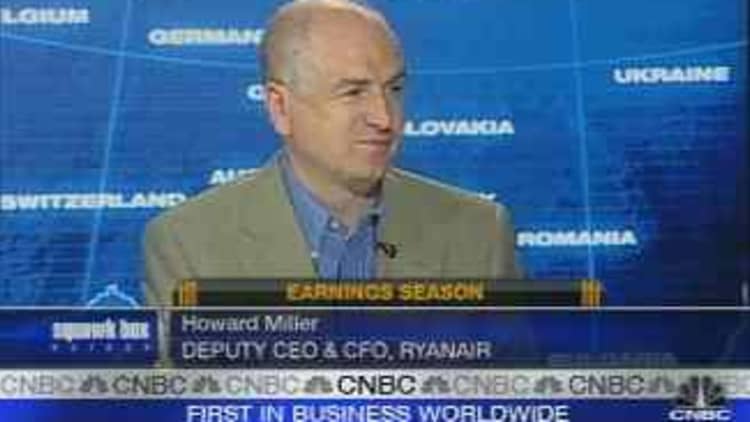Ryanair posted a better than expected 20% rise in first quarter net profit on Tuesday, and said it would beat its full-year profit goal by cutting capacity at Britain's Stansted airport this
winter.
Europe's biggest low-cost carrier said profit after tax in the three months to the end of June rose to 138.9 million euros ($189.9 million) from 115.7 million in the same period of 2006 after passenger volumes on its growing network rose 18%.
That was broadly in line with the most optimistic forecast in a Reuters poll of eight analysts, and well above the average prediction of 123.9 million euros.

The Dublin-based carrier said average ticket prices had been flat in the first three months of its business year and that its outlook for yields remained cautious.
Ticket prices in the second quarter are expected to be "slightly down" on a year earlier while a drop of 5% to 10% is likely in the second half, Ryanair said.
"However, the reduction in capacity on non profitable winter routes ... will enable us to slightly increase our previous guidance," the airline said in a statement.
Net profit for the 12 months to March 2008 is now expected to rise 10% versus an earlier forecast of 5%.
Ryanair , which is engaged in a war of words with the British government over increased duties for airline passengers and has repeatedly criticized the British Airport Authority over higher airport charges, said it would cut UK capacity.
"We plan to reduce the number of aircraft operated ex Stansted this winter by almost 20 percent from 40 to 33. This will mean reduced frequency or temporary cessation of services on routes which would be loss making."
That meant passenger volumes would now rise by 18% to 50 million versus the 52 million previously indicated.
Ryanair, which now expects unit costs to rise 5% this year versus an earlier 6% to 7% forecast, said the move should keep down costs and help stabilize yields.

